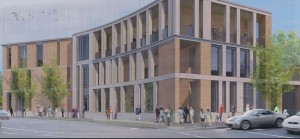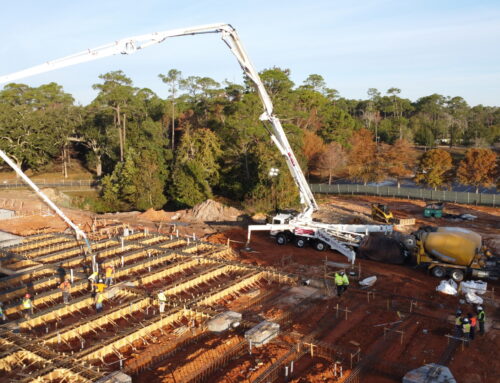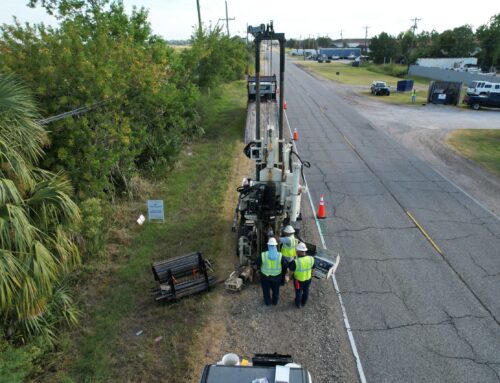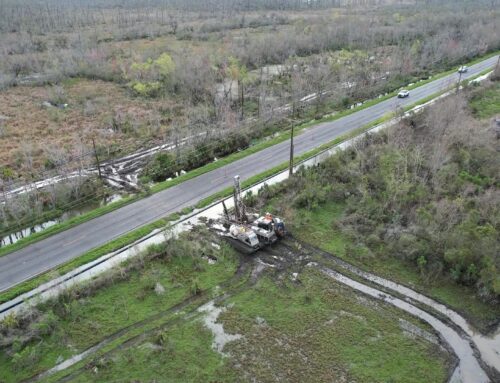CENTER FOR PHILANTHROPY
 NEW ORLEANS, LOUISIANA
NEW ORLEANS, LOUISIANA
Eustis Engineering has helped make New Orleans a little greener with the completion of a recent project that is turning the 50-year home of an old gas station into an ecofriendly permeable pavement site geared toward making the world a better place.
We have recently completed geotechnical and construction materials testing services for The Greater New Orleans Foundation’s (GNOF) new Center for Philanthropy located at Lee Circle on St. Charles Avenue in downtown New Orleans. The nonprofit’s striking new three-story structure features an elevated terrace in the courtyard, a rain garden, and private parking on permeable pavement. The building is comprised of approximately 22,000 square feet of office space on a relatively small footprint of only 9,000 square feet.
Steve Scollo, who has worked on the project since 2012 as an architect at Waggonner & Ball, said the nonprofit’s new headquarters had to be “humble but have a presence.” “They don’t want a lot of attention,” he said. “They are a service-oriented group.”
The city’s new zoning ordinance requires 1 inch of water to be stored on site, so the architects got creative with drain lines, irrigation, and pavements.
“Basically we’re using every drop of water,” Scollo said, who added that it was the most complex stormwater management project Waggonner & Ball has worked on to date.
Martha Landrum, Vice President for Marketing & Communications at GNOF, said the construction is in its final push. The plan is to move into the new space in mid-September with a grand opening in November.
“The Center for Philanthropy was built with the environment in mind,” Landrum said. “We’re using the latest in green infrastructure techniques in the most innovative and aesthetically appealing ways. For example, we’re building an underground cistern that will collect rainwater—water that will then be used on drier days to water the native plants.”
The company’s current headquarters is in the old K&B building at Lee Circle, so it will be a short move. Lee Circle, formerly called Tivoli Circle, historically served as a marketplace before the advent of the automobile.
In 2013, Eustis Engineering performed the initial geotechnical exploration which included the drilling of three undisturbed sample type soil test borings made to depths of 80 and 100 feet. These borings were drilled using a truck mounted rotary type drill rig. Three auger type soil test borings were also made at the site to depths of 8 feet.
Because the environmental engineer of record reported the soil and ground water may have been contaminated with leaded gasoline, diesel, and hydraulic oil when the site was used as a gas station, temporary decontamination pads were constructed onsite and a steam cleaner was used to decontaminate the drill stems and samplers. The decontaminated water and drill cuttings were placed in separate containers and labeled for off-site disposal at a different permitted location.
Soil mechanics laboratory tests and engineering analyses were performed to provide recommendations regarding site preparation and drainage, placement and compaction of fill, estimates of allowable pile load capacities, estimates of settlement, and corrosion potential of the soil on steel and concrete. Recommendations for rigid and flexible pavements and seismic Site Classification were also provided.
Since this geotechnical exploration, Eustis Engineering has provided a variety of construction materials testing services, including a test pile program including the logging the installation of probe piles and reaction piles, single-hole sonic logging of a selected pile, grout strength testing to evaluate pile construction quality, vibration monitoring during pile installation, and performance of a static load test; augercast grout inspection; augercast installation; concrete inspection; concrete mix design review; coring operations; inplace density testing; floor flatness testing; post-tension inspection; and rebar inspection.




